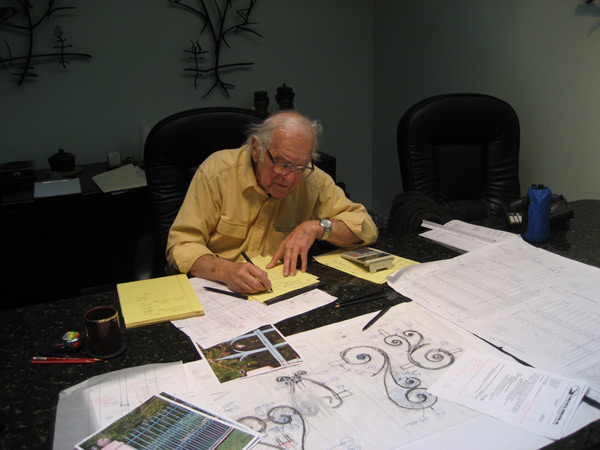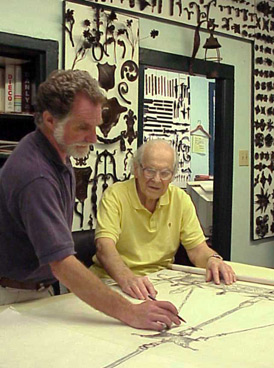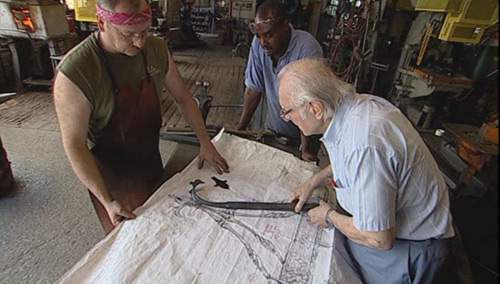Design
 Good metalwork design must address functionality, style, the quality of composition and, finally, the requirements for its execution. “Form follows function” is an appropriately shopworn expression. An object’s intended function should determine the parameters of its design! If you purchase a beautiful table lamp, but then get your hand nicked every time you reach under the shade to turn it on or off, the lamp quickly loses a lot of its appeal and value. As it should. The first axiom of any designer must be “Does the object work as needed? Is it safe to use?”
Good metalwork design must address functionality, style, the quality of composition and, finally, the requirements for its execution. “Form follows function” is an appropriately shopworn expression. An object’s intended function should determine the parameters of its design! If you purchase a beautiful table lamp, but then get your hand nicked every time you reach under the shade to turn it on or off, the lamp quickly loses a lot of its appeal and value. As it should. The first axiom of any designer must be “Does the object work as needed? Is it safe to use?”
Style, like art, is naturally in the eye of the beholder. If you enjoy the way something looks and it fits in, according to your eye, with its intended surroundings, then who could say it is not the “right” style. It is your choice.
 But there are also accepted styles in the vocabulary of the decorative arts that can govern the overall look of a piece: Gothic, Greek Revival, Art Deco, Contemporary, to name a few. There are guidelines a designer uses as s/he works to determine if an evolving design is suitable. For example, are the elements that comprise the piece true to the chosen style? Will the completed piece be in harmony with and complement its intended environment? Are the elements cohesive? And is the chosen style consistent with the piece’s function?
But there are also accepted styles in the vocabulary of the decorative arts that can govern the overall look of a piece: Gothic, Greek Revival, Art Deco, Contemporary, to name a few. There are guidelines a designer uses as s/he works to determine if an evolving design is suitable. For example, are the elements that comprise the piece true to the chosen style? Will the completed piece be in harmony with and complement its intended environment? Are the elements cohesive? And is the chosen style consistent with the piece’s function?
In the end, one should stand back, take in the overall design, and assess its finished composition. When we do that, we ask ourselves such questions as, Does the design lead the viewer’s attention to a principle center(s) of interest? Are the proportions within the overall space in balance among linear elements, secondary focal points and the distribution of mass? Is the negative space properly proportioned to the whole? Does such space support rather than detract from the center of interest. Last, the invisible sight lines within the composition are the final arbiters of balance. Do they confirm the visual balance in the design or do they identify discordance or imbalance that needs to be corrected?
 Once satisfied with the composition, the designer must review it in relation to its execution. Much interpretation is involved during the transition from a two dimensional drawing to expression in metal. In our shop, the critique process is most frequently an informal one hosted by the designer in conjunction with the tasked blacksmith(s) or at times our entire staff. Each element is considered. The goal is to determine if the techniques and sequences suggested by the design are as effective and as efficient as possible. If not, alternatives are considered; at times designs are modified accordingly.
Once satisfied with the composition, the designer must review it in relation to its execution. Much interpretation is involved during the transition from a two dimensional drawing to expression in metal. In our shop, the critique process is most frequently an informal one hosted by the designer in conjunction with the tasked blacksmith(s) or at times our entire staff. Each element is considered. The goal is to determine if the techniques and sequences suggested by the design are as effective and as efficient as possible. If not, alternatives are considered; at times designs are modified accordingly.